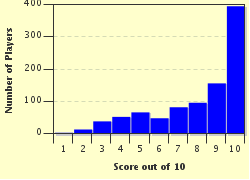Quiz Answer Key and Fun Facts
1. This nineteenth-century German composer's portrait emphasizes his artistic temperament, with his rakish hat and stylish cravat. He is best known for his operas, which include "Tannhauser", "The Flying Dutchman" and "Parsifal". Can you name him?
2. This photograph shows the composer at the age of 47, only a few years before his death in 1911 aged 51. During his lifetime he was better known as a conductor, although his nine completed symphonies, including the "Resurrection" (No 2) and the "Symphony of a Thousand" (No 8) are now hugely popular and frequently performed all over the world. What is his name?
3. This serious looking man, with his unruly hair and frilled shirt, is surely one of the most famous and influential composers of all time. Straddling the 18th century "classical" and the nineteenth century "romantic" movements, he continued to compose even after becoming deaf during his later years. Who is he?
4. This Italian composer, well known for his operas such as "Rigoletto", "La Traviata" and "Aida", has a name which, if translated into English, becomes Joseph Green(s). True or false?
5. Who is the eccentric looking gentleman in this photograph, with his impressive fur collar, lorgnette perched on his nose, and flamboyant facial hair? A French composer of the 19th century, he is best known for his operettas such as "Orpheus in the Underworld" and "La belle Helene".
6. This composer looks the very model of an Edwardian English gentleman, with his impressive moustache and oiled hair - an image which he cultivated keenly. This photograph shows him in around 1900, shortly after the successful premiere of his orchestral "Enigma Variations" brought him national fame. What is his name?
7. This French composer may perhaps be hard to recognise from his photograph alone, but when I tell you that he wrote the suite "The Carnival of the Animals" (1886) and the opera "Samson and Delilah" (1877), you should be able to guess his name. Who is he?
8. This English composer perhaps looks more like a teacher or businessman, in his formal suit and round glasses. And perhaps that's not surprising, as he held the post of Music Director at St Paul's Girls' School in London from 1905 until his death in 1934. Best known for his orchestral suite "The Planets", who is he?
9. This nineteenth-century German composer made significant contributions to most of the major musical genres, including four symphonies, two piano concertos, a violin concerto, and much chamber music. He wrote no operas, however, his major vocal work being his 1868 "A German Requiem", which (as its name suggests) sets extracts from the German Lutheran Bible, rather than the Latin texts of most Requiems prior to this. What is his name?
10. Possibly the most famous classical composer of all time, very few authenticated contemporary portraits exist of this man. The one shown here, by Johann Nepomuk della Croce, dates from around 1780, 11 years before his premature death only a few weeks after conducting the premiere of his opera "The Magic Flute". Who is this talented composer?
Source: Author
stedman
This quiz was reviewed by FunTrivia editor
agony before going online.
Any errors found in FunTrivia content are routinely corrected through our feedback system.


